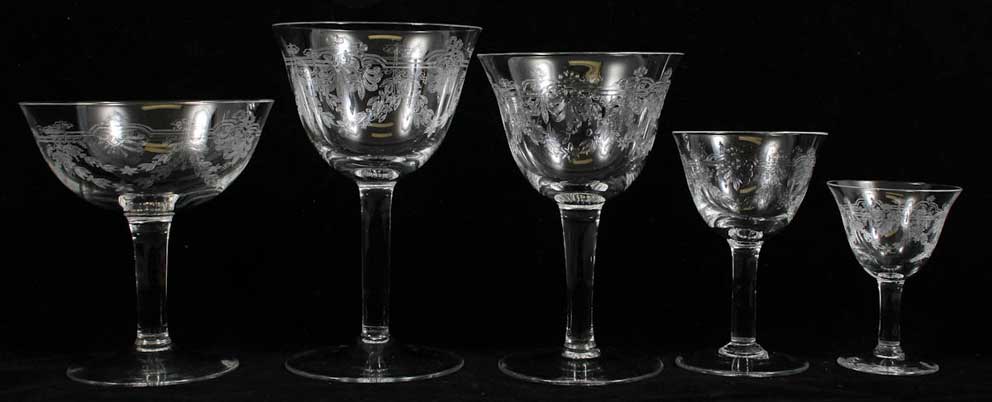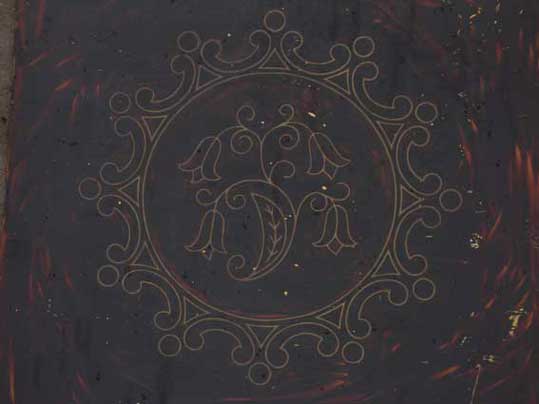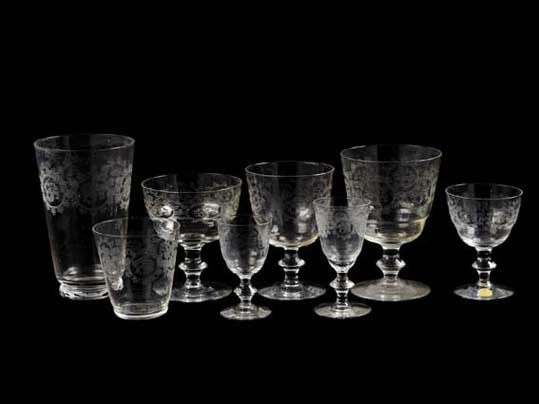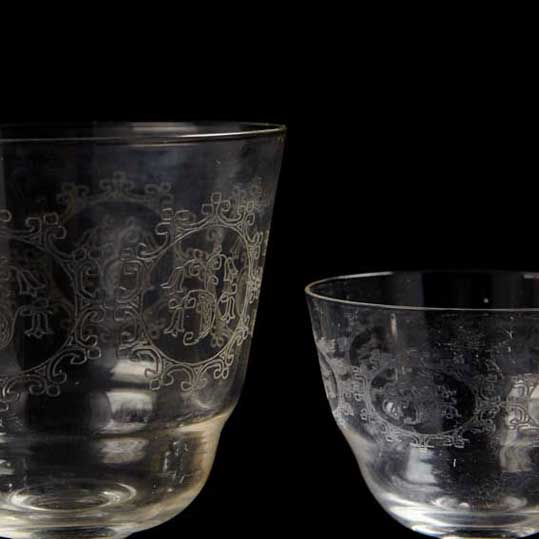Pantographing: the same pattern on differently sized glasses, how does that work?
The two functions of the pantograph are:
1. copying a pattern from a template to max (on our machine) 24 glasses, and
2. re-scaling it from a template which can be 20-30-40 cm to a size that will fit a glass. ("Glass"
here means a drinking vessel, or at least something round)
Below is a video describing the mechanics.
The scaling occurs in two directions, in the vertical direction of the glass and also laterally, i.e. along the perimeter of the glass.
These two scales can be set independently of each other, which is necessary for the pattern to be adapted to various glass sizes.
The more the pattern is reduced, the easier it will be to follow the grooves in the template with the pattern stylus.
If the scales are radically different, for example if the pattern is reduced only twice in height but ten times sideways,
the sideways movments (when following the template) will be very light, but heavier for the vertical movements.
As also shown by the film, the scales are set by changing the angles of the two guides.
On our pantograph there are no "help scales" to set these angles. The most reasonable assumption is that the scaling
was done by placing a glass of the current series in the machine, and then adjusting the two guides until "done" before
production was started.
The picture of the five glasses above illustrate the need to be able to scale the pattern. The pattern is repeated five times
around the circumference of the glasses. The patterns connect exactly, so as to form a continuous border around the glass.
Is there a need to re-scale sideways for different glasses?
It is easy to believe that the pattern needs to be scaled to reach around the entire perimeter of the coupe glass left compared to the
Maderia glass to the far right. But it's not. The number of copies pattern around the circumference is determined by the number of needles used.
For this set there were five needles used to copy the pattern five times. The sideways scale was set so that the pattern
exactly fills a fifth of a full turn corresponding to an angle of 72 degrees. This, each pattern copy fills exactly a fifth of a
turn, will apply regardless of how large or how small the glasses are.
To re-scale the pattern sideways would thus, in this case, lead either to overlapping pattern repeats or
to gaps between them, depending on whether the scale is increased or decreased. But as long as the scale is unchanged,
the relationship around the glass, connecting patterns or gaps, etc., is completely independent of the diameter of the glass.
In height, however, the scale was adjusted between, for example, the coupe glass and the white wine glass which is second from left.
This also means that the pattern proportions will be different. In the current example, perhaps it does not matter much because the
pattern itself is complex and difficult to grasp.





